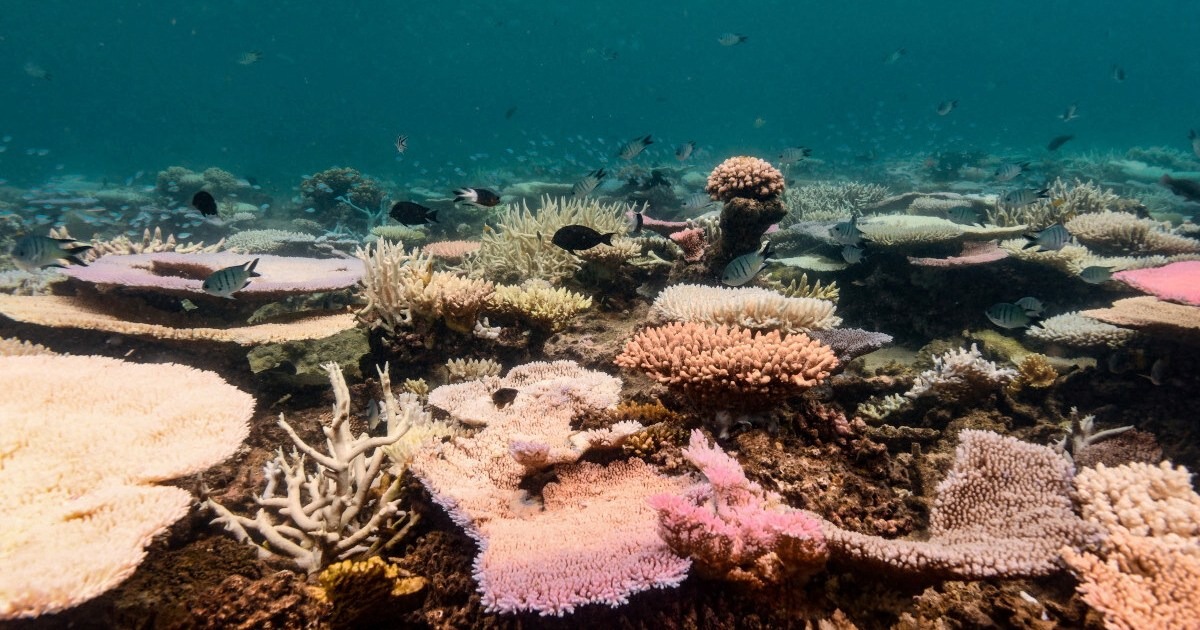The world’s coral reefs are experiencing a widespread bleaching event, marking a serious environmental crisis that has affected coral ecosystems in at least 53 countries and territories globally, as detailed by researchers from the National Oceanic and Atmospheric Administration (NOAA) and the International Coral Reef Initiative (ICRI).
This event, observed across both Northern and Southern hemispheres, includes major reefs like Florida, the Caribbean, the Eastern Tropical Pacific regions, Australia’s Great Barrier Reef, the South Pacific, the Persian Gulf, and the Gulf of Aden.
Coral bleaching (Credits: Australian Geographic)
Coral bleaching happens when corals, stressed by environmental changes such as temperature, light, or nutrient shifts, expel the algae living in their tissues, losing their color and turning white. This condition doesn’t always lead to coral death but poses a severe risk to their health and survival.
The occurrence of this mass bleaching is the second such global event in the past decade, with the previous one ending in 2017 following an El Niño-induced increase in ocean temperatures.
Coral bleaching disaster (Credits: Vox)
NOAA’s Coral Reef Watch coordinator, Derek Manzello, highlighted the increasing frequency and severity of such events as ocean temperatures continue to rise, threatening the critical benefits coral reefs offer, from biodiversity protection to economic support through tourism and fishing industries.
This situation underscores the urgent climate change issues impacting our oceans, as further evidenced by 2023 being the warmest year on record. The escalating ocean temperatures pose a continuous threat to coral health, emphasizing the need for immediate and sustained action to address global warming and protect these vital ecosystems.
